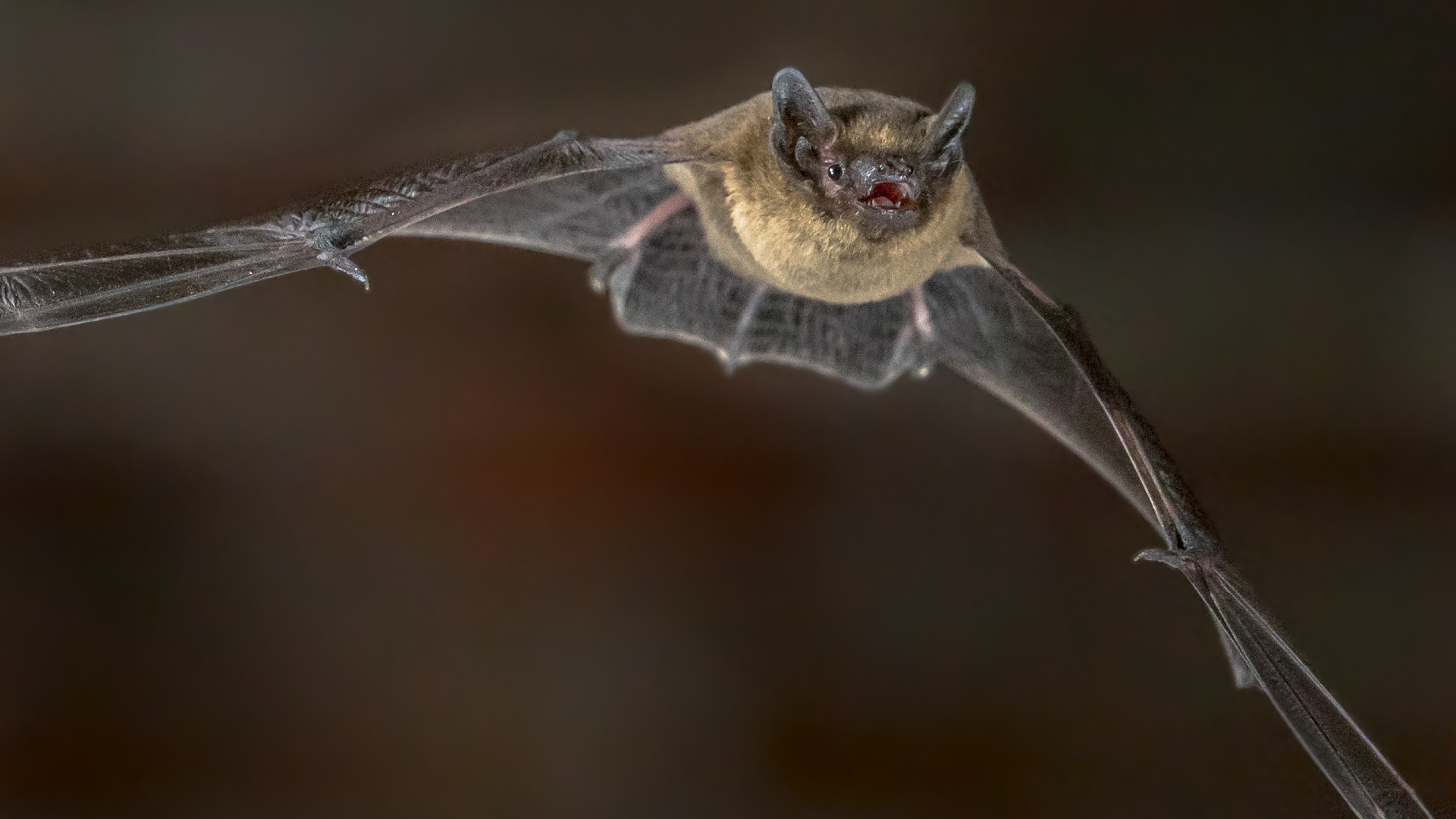Your Guide To “Oh Sh*t, A Bat Is Flying Around My House!”
Not all bat encounters are created equal—and some are easier to handle than others.

Let’s talk about bats.
For New England homeowners, few other sights conjure such strong reactions as when there's a bat spotted inside their living space. We're not talking about bats roosting in an attic—but a single wayward bat flying around your living room, swooping down just slightly missing your head. The latter scenario tends to send homeowners running into another room, locking the door behind them, or armoring up with old hockey masks and oven mitts. Regardless of where you fall on the reaction spectrum, we have tips and advice straight from the wildlife control experts here at Pest-End.
As the weather grows warmer, bats are more active than at any other point during the year and most likely to wander their way into places they shouldn’t—where they can be considered a threat to you, your family, and your property.
The Two Categories of Bat Encounters
Not all bat encounters are created equal—and some are easier to handle than others. Based on our decades of experience with bat exclusion in New England, we like to group bat invasions into two main categories.
Type 1: A Chance Invasion
Threat Level: Low
“Invasion” isn’t always the right word when it comes to bats—because a large portion of bat invasions are no more than accidents. Unlike squirrels who are known to chew their way into a warm, cozy spot inside your home, bats tend to simply enter through entry points that are already open. They’ll wander their way unknowingly through vents, chimneys, open doors, and windows, just as confused as you are of their new interior surroundings and left to search for ways to get back outdoors.
Young bats (called pups) that are just learning to fly are the most common culprits of these kinds of encounters, accidentally piloting their way into the wrong place and flying in circles to frantically find an exit.
What To Do
In immediate response to this type of bat encounter, do not try to handle the bat. If possible, close off where the bat is located in your home. Seal off any interior doors the lead to the space while opening any exterior doors and windows. Ideally, the bat will exit on their own. If they’re too stubborn to leave, get in touch for professional assistance and we’ll help you see the bat out safely.
Type 2: A Search For Safety
Threat Level: Moderate
In other cases of bat encounters, damaged roofing, siding, and framing are fair game for inquisitive bats willing to squeeze their way into your attic or basement in search of a safe space to roost. They prefer dark, warm, and quiet spaces to raise their pups.
The early summer is considered peak roosting season for bats to raise their pups—aka those inexperienced flyers we discussed in Type 1 invasions, who might just make their way back inside through an open entry point. These young bats are most likely to fly away from home between mid-July and mid-August.
What To Do
Hearing rustling, scratching, or squeaking noises around your home? Spotting dark-colored stains or droppings in your attic, soffits, or other dark places? If you don’t spot the bat first, these are the warning signs that indicate winged visitors in your home. As soon as you spot the evidence, call pest control experts as soon as possible.
Don’t Take Matters Into Your Own Hands
Exposure to bats can be dangerous—for you and for the bats!
Save The Bats, Protect Our Ecosystem
Did you know that more than half of bat species in the United States are declining in numbers or listed as endangered? As a result of a disease called white-nose syndrome, the bat population in the US is dropping. For example, the Little Brown Bat was once a common species in the Northeast. But in the past decade alone, their numbers have fallen by a staggering 95%. That’s bad news for our ecosystems, which rely on bats to devour problem insects like beetles, moths, and mosquitoes.
Consider bats as our unofficial assistants in pest control. As protectors of our community and the ecosystems within it, it’s our job to protect bats, too. Our pest control technicians strive to handle bats as safely as possible in the event of an invasion.
Safety First
Bats are also known to defend themselves when stressed or frightened—and dealing with bat bites or scratches is not something you want on your agenda this summer.
If you’ve been bitten or scratched by a bat, wash the wound thoroughly with soap and water and seek medical attention immediately. Before that happens, know that the best way to prevent a bat-related injury is to contact the experts for bat removal assistance.
Cleanliness Is Key
It’s true that bats can carry diseases like rabies. However, you’re at a lower risk of contracting such a disease from a bat directly than you are of catching illness from what bats leave behind. Bat droppings, also called guano, are often the most dangerous part of a bat invasion.
Guano can trigger respiratory infections in humans, contain biting insects, and cause property damage if fecal buildup is left unchecked. As part of our bat investigation, we’ll ensure your home is sanitized properly and thoroughly.
Do Call The Bat Removal Professionals
At Pest-End, we use over 40 years of experience in bat exclusion to handle them with care. Our safe, humane removal process gives bats the best chance of leaving your home injury-free to find their own home elsewhere.
Ready to put an END to bat invasions?
Our team is ready to assist! Get in touch for a free estimate and to learn more about bat exclusion from New England’s experts.



